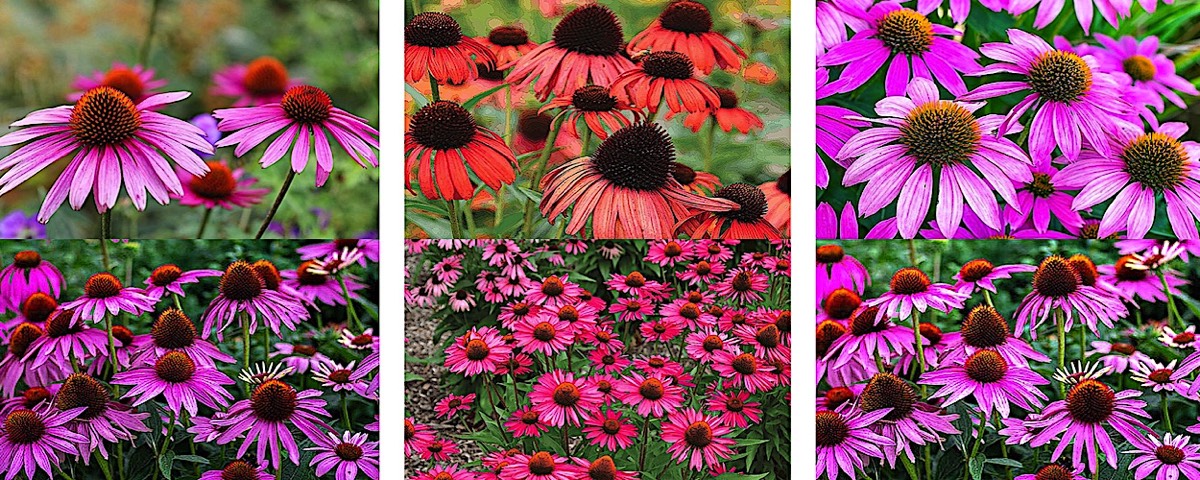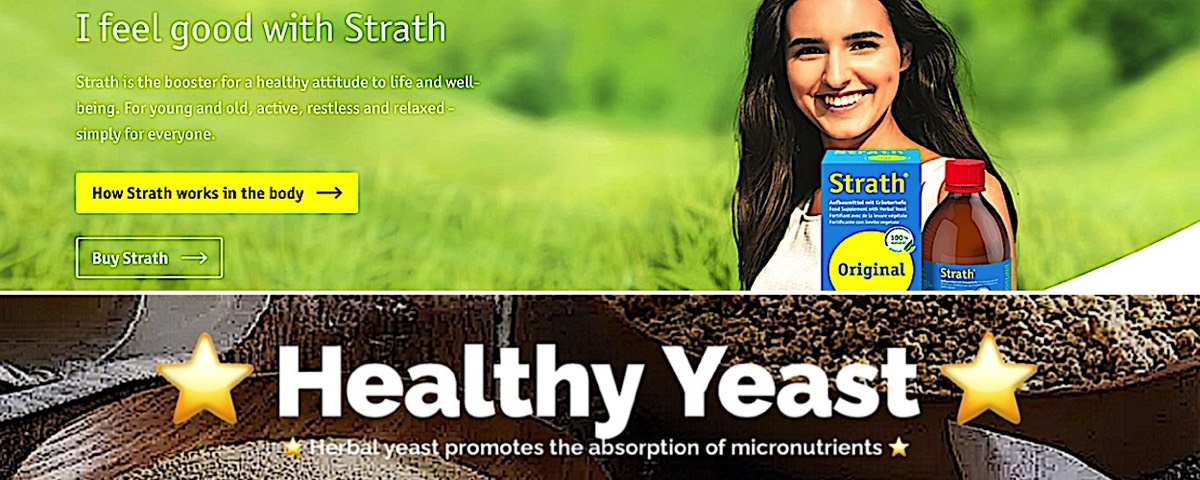

Colds and influenza infections: well protected with Echinacea Purpurea (purple coneflower)
A.Vogel

IMPORTANCE OF ECHINACEA
It’s no surprise that the splendid purple coneflower (Echinacea purpurea) caught the eye of the native peoples of North America: a prairie or clearing densely covered with these striking purple blooms must have been an unforgettable sight. Today, this beautiful herbaceous perennial is known above all as a valuable and versatile medicinal plant.
Dr. Claudia Rawer
Echinacea Purpurea, like its eight sister species, originates in eastern and central North America. This tall plant bears conical or rounded flower heads whose mainly orange or reddish tubiflora call to mind the little spines of hedgehogs. This is also the origin of the botanical name Echinacea, derived from the Greek “echinos” meaning sea urchin. These little hedgehog heads are surrounded by an aureole of tongued-shaped petals, often gently hanging, which range in color from the brightest rose through glowing pink to dark purple, in striking contrast to the dark-green leaves. Also known as the globe daisy or hedgehog coneflower, this composite is often described as the purple coneflower in order to differentiate it from its close relative, the typically yellow-blooming rudbeckia.
Echinacea Purpurea was one of the most important medicinal plants of the Native American tribes.

Its many potential applications were chronicled by European immigrants, traders and trappers, and later, in the early 20th century by ethnobotanists, too
Its many potential applications were chronicled by European immigrants, traders and trappers, and later, in the early 20th century by ethnobotanists, too. For example, the coneflower was used as a versatile painkiller for the treatment of sore throats, stomach and toothache, as an anti-inflammatory drug for injuries and poorly-healing wounds, for the treatment of blood poisoning, snakebites and rabies, for all symptoms that may be associated with flu or colds, for the treatment of skin infections and as a tonic for pox infections. Chewed or squashed roots – for example, in poultices – chewed leaves or tea made from fresh petals, leaves and roots were used.
The QUEEN of Immune-System strengthening plants: Echinacea Purpurea

And this is with good reason. As well as essential oils, the key active components of echinacea include caffeic acid derivatives, polysaccharides and glycoproteins, polyynes (a type of hydrocarbon) and flavonoids.
And this is with good reason. As well as essential oils, the key active components of echinacea include caffeic acid derivatives, polysaccharides and glycoproteins, polyynes (a type of hydrocarbon) and flavonoids. A very specific and highly important role is played by alkylamides (also: alkamides), which have many immunomodulatory and anti-inflammatory characteristics.
Different plant types, however, contain different constituents. In addition, the freshly blooming leaves, roots and even the entire plant are also used for the production of medicinal echinacea products. The leaves and roots of the purple coneflower and the narrow-leaved purple coneflower have approximately the same substance groups, albeit differing in type and composition and in different amounts. A few examples: The alkamides in the roots of the purple coneflower differ from those in the narrow-leaved purple cornflower. The root of the pale purple coneflower contains this important substance group in a smaller amount. The amount of cichoric acid (a caffeic acid) in E. purpurea is around ten times higher than in the other two types, while the purple coneflower also contains the substance echinacoside, which occurs in E. angustifolia and E. pallida. (it should be borne in mind that such statements also vary depending on the source.) In the 1990s, two polysaccharideswere identified only in the roots of E. purpurea that are also considered to be immunomodulatory.
Echinacea isn’t always echinacea So it’s no surprise that in 1989, the German Federal Health Ministry’s Expert Commission for medicinal plants approved only the fresh leaves of Echinacea Purpurea. The intervening years, however, have yielded a number of new and differentiated findings.
Different plant types, however, contain different constituents. In addition, the freshly blooming leaves, roots and even the entire plant are also used for the production of medicinal echinacea products. The leaves and roots of the purple coneflower and the narrow-leaved purple coneflower have approximately the same substance groups, albeit differing in type and composition and in different amounts. A few examples: The alkamides in the roots of the purple coneflower differ from those in the narrow-leaved purple cornflower. The root of the pale purple coneflower contains this important substance group in a smaller amount. The amount of cichoric acid (a caffeic acid) in E. purpurea is around ten times higher than in the other two types, while the purple coneflower also contains the substance echinacoside, which occurs in E. angustifolia and E. pallida. (it should be borne in mind that such statements also vary depending on the source.) In the 1990s, two polysaccharideswere identified only in the roots of E. purpurea that are also considered to be immunomodulatory.
Echinacea isn’t always echinacea So it’s no surprise that in 1989, the German Federal Health Ministry’s Expert Commission for medicinal plants approved only the fresh leaves of Echinacea Purpurea. The intervening years, however, have yielded a number of new and differentiated findings.
Scientific Research into Echinacea

An assessment of the efficacy of echinacea preparations must take into account the plant species and components used, the methods of preparation and the condition of the plants.
A number of studies have been conducted which withstand strict scientific scrutiny and on the basis of which serious statements on the effect of Echinacea Purpurea can be made.
For a strong Immune System

Echinacea Purpurea has a modulating effect on the Immune System. This means that the cells of our defense system are stimulated to to become active in a moderate and lasting manner as soon as – and only when – the body comes into contact with pathogens, above all as a result of stress, lack of sleep and smoking.
The Immune System, however tirelessly it works, cannot deal with all Challenges.
Help is welcome in regulating the immune response at these stressful times. And it is precisely the Echinacea Purpurea which is best able to do this.
The trailblazer Alfred Vogel

Alfred Vogel was convinced of the health benefits of the Echinacea Purpurea from the early 1950s. And the research findings described show how correct he was in his judgement.
But that’s not all: he insisted on producing his preparations from fresh plants because they have “a greater effect than preparations from dried plants” and “fresh plant preparations have a swifter, stronger and more profound effect than can be achieved with preparations from dried plants”. Once again, the pioneer of naturopathy was correct: as early as in 1994, it was demonstrated that a fresh plant extract produced from the Echinacea Purpurea contains almost three times as many alkamides as a product made from dried material.
n 2013, a Canadian research group was able to prove for the first time that the fresh plant has a ten times greater effect on viruses than the dried plant, since it contains all constituents.
n 2013, a Canadian research group was able to prove for the first time that the fresh plant has a ten times greater effect on viruses than the dried plant, since it contains all constituents.
The best product of Echinacea Purpurea: EchinaForce


Healthy Supplements

Even with the best dietary intentions, we often fall short of meeting all our nutritional needs. One answer is a daily multivitamin, which is safe, effective, and can go a long way toward correcting any nutritional deficiencies.
Triangle of Health

The Triangle of Health is a three-step system that delivers the nutrients you need plus the science to make sure they are optimally absorbed by your body. Together, Kyäni Sunrise, Sunset, and Nitro fill in the gaps your modern diet may be lacking.
Healthy Yeast Bio Strath

fermented herbal yeast like Bio Strath considerably improves the uptake of micronutrients such as magnesium, zinc, iron and vitamin B1. The average values of the test series with micronutrients in combination with herbal yeast were 6 (iron) to 10 (vitamin B1) times higher than the average values for the controls with the micronutrients alone.
Healthy Nutrition

Nutrition is about eating a healthy and balanced diet. Food and drink provide the energy and nutrients you need to be healthy.
HealthyLifeHow.com
Contact Us & follow us for Vitality & Healthy Life Information


The goal is to ensures short and long term vitality & health and to get a physical body that is strong, flexible and fit through each stage of our lifes.
HealthyLifeHow.com




